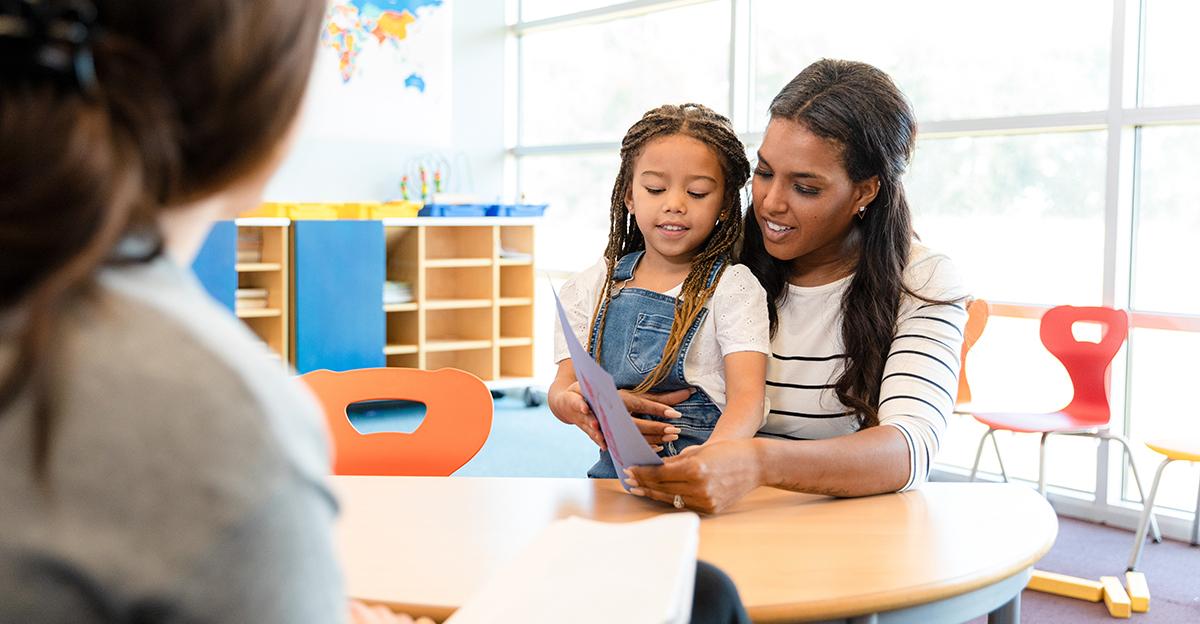Family engagement in a child’s education is critical to their development and future success. Regardless of background and income, children with engaged families are more likely to have better attendance, earn overall higher student achievement, develop better social skills, have better behavior, and are more likely to graduate from high school and continue to higher education.
As a school administrator who worked at various schools, all of which were drastically different from one another, I saw time and again the unique forms and levels of family engagement with one commonality: families care about education and their child’s future. Contrary to common stereotypes and assumptions, my experience was further evidence that family engagement most closely reflects a campus climate and culture. I learned to never assume to know or understand the complexities and burdens present in the individuals’ lives that I encountered.
It is my belief that almost all parents are doing the best they know how to do. Granted, this looks very different based on their personal history, but it is still their personal best, individual capacity, given their current circumstances. More importantly, what makes a school a haven and community support for families? Family engagement with schools should not be a burden or responsibility; it should be an exciting partnership that benefits both parties.
What Is Family Engagement?
Family engagement is a partnership between families and the school created through mutual trust and respect in the shared effort to benefit the students. A few important points to note: families all look different and contain different key members, meaning that schools should welcome and embrace these differences knowing our students’ lives are all unique. Also, the benefit is to the student, as opposed to the school and educators. Family engagement is important because of the positive impact created for a child as a result.
The definition of engagement is far more comprehensive than is commonly recognized, so let’s take a look at the different areas:
- Parenting: Expectations, supervision, knowledge of life, interest, involvement, and engagement
- Communicating: Two-way communication with the school
- Newsletters
- Communication folders and agendas
- Communication apps: updates, pictures, notes, reminders (ex. ClassTag, Remind, TalkingPoints, Seesaw, SchoolMessenger)
- Social media and websites
- Supporting School: Volunteering & attending
- Learning at Home: Expressing the importance and value of education, encouraging dedication to learning, assisting as appropriate
- Homework
- Decision-Making: Serving on parent and school or district organizations
- Collaborating with Community: Providing life and educational experiences for their child, communicating with other parents
What Are the Common Barriers to Family Engagement?
School and academic work can be intimidating for families. To help families overcome this barrier, educators need to create a welcoming, accepting, positive environment that celebrates their involvement, no matter how big or small, and makes them feel valued and worthy.
When families are not engaging, it is important to ask questions to determine why. There is always a reason. Is the parent literate? Do they speak and read the language reflected in the materials and school-home communication? What life circumstances are at play? Do they work multiple jobs? Are they taking care of a sick relative, or are they suffering from illness themselves? Are they a single parent? What could be happening that I don’t know, and do not need to know? The list goes on and on, and whether it is a good reason for us as educators does not change whether it is a valid reason for that family.
Family engagement should not be expected to look the same for everyone, an inevitability that we must value and respect. The benefit of an engaged family is not the support that could potentially be provided to the school, but the long-term impact family involvement has on a child’s achievement. The type, quality, and amount of engagement are far less important than the fact that they are engaged.
These are some of the top barriers to family engagement:
- Lack of awareness or communication regarding opportunities
- Connection or relationship with the school is lacking
- Time limitations
- Work conflicts
- Childcare needs
How Can Schools Improve Their Family Engagement?
Schools can establish a shared vision for family engagement that includes the values of trust, relationships, partnership, collaboration, inclusion, and equity. From this, expectations and goals should be created. Some of the most effective strategies for increasing your family engagement include:
- Communicate positives (not just concerns)
- Create a positive and welcoming environment for all families
- Utilize all forms of communication
- Have a clear vision and goals that guide; be transparent in school operations
- Build relationships through fun and exciting celebrations and experiences
- Be consistent with efforts to communicate
- Keep things simple—activities, dates, workload! Create a situation that generates feelings of confidence in your students and their families
- Be supportive by offering help, solutions, ideas, and empathy
One interesting data point to show the effectiveness of these strategies is that when the school and educators are active and consistent about reaching out to parents, research has shown that reading scores improve 50% faster and math scores improve 40% faster—simply because the educators were passionate in their pursuit of family engagement! Even when we sometimes believe that our efforts are not making an impact, they are!
When looking more specifically, the most impactful, targeted actions by the school include:
- In-person family-educator meetings
- Phone calls and home visits (if appropriate)
- Sending home materials on ways to help their child at home
- Routine phone communication regarding celebrations as well as concerns
- Updates on progress
- Math and reading learning packets with specific instructions
- Training and parenting support information
Family Engagement Essentials for Success
Quality family engagement in a child’s education is critical and possible when the definition, expectations, and vision are clearly established in a way that encourages and inspires participation and enthusiasm. Remember…
- Make families feel welcomed
- Focus on the school’s mindset and paradigm surrounding family engagement
- Recognize, respect, and factor in the unique characteristics of families, including educational level, culture, language, socioeconomic level, and personal circumstances
- Ensure that family engagement is strategically planned by the school employees
- Recognize the variations in what a family’s engagement may, or may not include, celebrating all involvement
- Provide a variety of family engagement options and opportunities to appeal to the different needs of families
As stated by children’s author Emilie Buchwald, “Children are made readers on the laps of their parents.” What families are doing, or how well they are doing it, is far less important than the fact that families are engaged in some capacity with their children’s education. This engagement generates academic and future success for the child and makes our jobs easier and more rewarding as educators.
By being mindful of the different components of family engagement, aware of the diversity and complexities within our families, and being excepting, encouraging, and positive, we can create a climate and culture of love and acceptance that manifests into academic achievement for students.
School Specialty Has the Solutions to Your Family Engagement Needs
School Specialty offers a wide selection of products that support family engagement. Our collection of engaging resources is a one-stop shop for your school community needs.
Shop Family Engagement Products
Laura Nicole Hill
Nicole has served within the field of education for 16 years as a classroom teacher, specialist, assistant principal, and principal. She is certified as an educator in the areas of EC-12 Principal, EC-8 Generalist, 8-12 English Language Arts, Reading, and Social Studies, EC-12 Special Education, EC-12 Gifted and Talented, and EC-12 English as a Second Language. Her school experience varies and includes work with students in prekindergarten through 12th grade, both in Texas and Europe, and within communities that were uniquely diverse in terms of their demographics, size, and campus needs. While serving in these roles, she developed expertise in the areas of curriculum and instruction, professional development, and leadership. As the Instructional Solutions Subject Matter Expert for School Specialty, she provides expertise in the areas of Literacy and Math, as well as other content areas and classroom resources.
Read more by Laura Nicole Hill–>







Great information on how to overcome barriers of family -Engagement.
Excellent reminders for school staff to be clear of biases and be strategic in addressing family engagement at the classroom and school level. It also offered reminders about utilizing Title I resources and local partners to help families overcome challenges or barriers to getting involved in their children’s education/school.